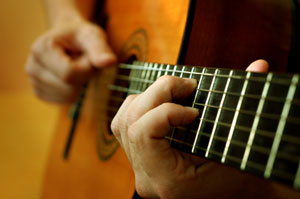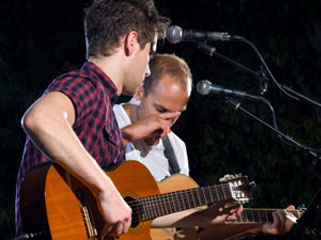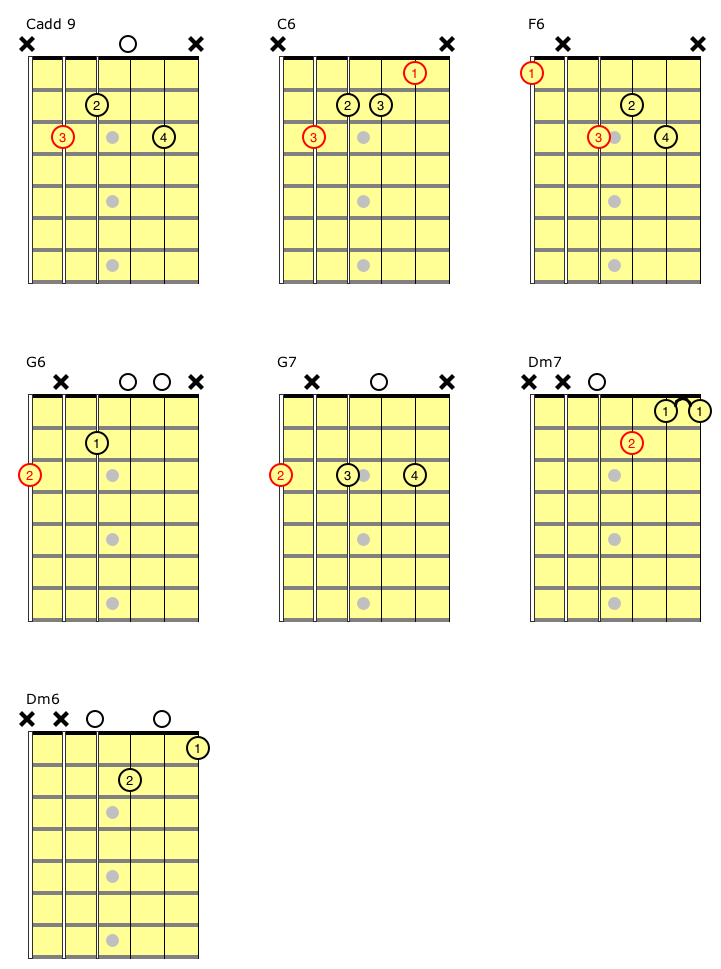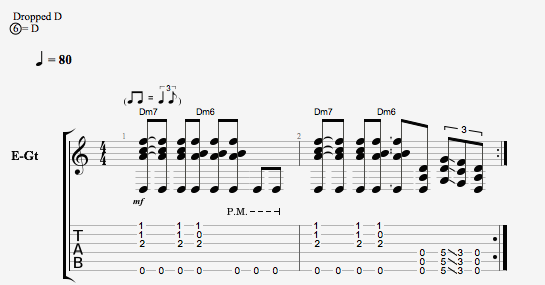
Blog
Jul 21 2015 |
6th ChordsBy: Scott Gilliam Posted in: Rock Guitar Lessons Many times guitarists are required to play the same chord for several measures of music or we just want to add some spice to the more commonly played chords. A nice variation or embellishment to a basic triad is a 6th chord. A 7th chord is a very strong sound and it sometimes can be too much of a departure for a three note chord structure. The 6th is more subtle and can also be used in major and minor chord progressions. To find the 6th degree you count up six notes from your tonic. For example a C6 would be C,E,G, A. The notes however do not necessarily need to be spelled in that order. We can change bass notes, use inversions,etc.
In Ex 1. we will play a I-IV-V in the key of C major. The first two bars are a C chord, so in the first measure I am using Cadd 9 and in the second measure I will use C6. This chord is voiced C,E,A,C – the 5th which is G, is omitted. Another name for this chord might be Am/C – meaning it’s an Am triad with a C in the bass. The third measure will be F6 – which is voiced with an F in the bass and F,A,D on top. Again, I have left the 5th out of the chord because it doesn’t have a strong harmonic function, and it’s often replaced with extensions or alterations to the chord. You can use the thumb for the bass note if you are comfortable, but since we are fingerpicking I am using the index finger. The last measure is G6, voiced G,E,G,B and then G7 voiced G,F,G,D. You don’t necessarily have to play every note in a chord for it to retain it’s sound. For example, in the G7 I left the 3rd (B ) out. This was so I could keep the melody notes, which are the highest notes in the chord, close to one another throughout the progression. This is for the sake of continuity and to have a bit of melody throughout our chord sequence. *Note* – I have provided chord grids for all the chords in the specific progression, so some open stgs are muted which in other scenarios could be played. The fingerpicking pattern through the first three measures is Travis picking, which is inspired by a famous tune you will no doubt recognize!
Ex 2. is a vamp in D minor utilizing a Dm7 and a Dm6 in the open position. It’s also using a “Drop D” tuning, which means your low E stg is tuned down a whole step to a D. This progression could be used in a Dm blues or recorded onto a loop pedal to improvise over. I am using the 6th stg D as a pedal tone and then playing two Dm7’s followed by the Dm6. Utilizing the 6th sound with minor chords can be tricky. If you are generating chords from the major scale, two of the minor chords diatonic to the key would have a b6 rather than a nat6. Of course you can borrow from other keys, and one of my favorite jazz guitar players, John Abercrombie, uses minor chords with a #5, which is the enharmonic equivalent of a b6. Your ear is always your best guide to coming up with new voicings !
|









